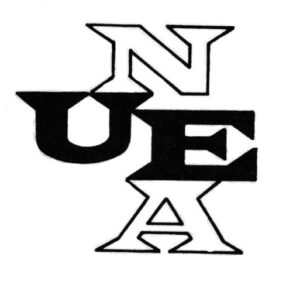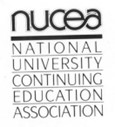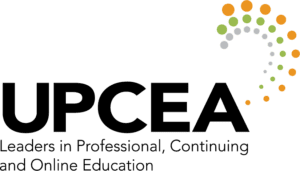At the turn of the 20th century, the one-room schoolhouse was the model for primary education in rural America and college was mainly reserved for the elite. During this time, the seeds for today’s distance education models were being sown. The rise of correspondence programs and the introduction of extended campuses at a growing number of colleges and universities made a college-level education available to people who, for a variety of reasons, could not attend campus-based classes in person. And, UPCEA was there from the start, leaning in to expand access to a higher education.
THE STORY SO FAR
1890
Morrill Land-Grants Acts (1862-1890)
The Morrill Act of 1862 was also known as the Land Grant College Act. It was a major boost to higher education in America. The grant was originally set up to establish institutions in each state that would educate people in agriculture, home economics, mechanical arts, and other professions that were practical at the time. The land-grant act was introduced by a congressman from Vermont named Justin Smith Morrill. He wanted to assure that education would be available to those in all classes.
1914
Smith-Lever Act of 1914
The Smith-Lever Act is a United States federal law that established a system of cooperative extension services, connected to the land-grant universities, in order to inform people about current developments in agriculture, home economics, public policy/government, leadership, 4-H, economic development, coastal issues (National Sea Grant College Program), and many other related subjects. It helped farmers learn new agricultural techniques by the introduction of home instruction.
1915
NUEA holds first annual conference at University of Wisconsin
National University Extension Association (NUEA), what we now know as UPCEA, was founded.

1918
Federal Division of Educational Extension Established
1919
NUEA incorporates
NUEA establishes an office in the Washington, DC
1922
NUEA adopts standards for extension credit courses
1934
University of Iowa broadcasts televised courses. Other colleges soon follow.
1944
The Servicemen’s Readjustment Act of 1944 – the G.I. Bill – becomes law
Among the benefits to service veterans was cash for tuition and living expenses to attend university, high school or vocational education programs.
1950
NUEA regions and regional conferences established
1951
The Ford Foundation establishes the Fund for Adult Education to aid liberal adult education in political, economic and international affairs.
NUEA becomes a partner in developing the Center for the Study of Liberal Education for Adults
1952
NUEA receives 501(c)(3) status
1965
Head Start program originates with partnership between the US Office of Education and NUEA to provide training to nearly 30,000 child development center staff nationwide.
1972
NUEA moves to current HQ at the National Center for Higher Education in Washington, DC
1980
NUEA becomes NUCEA – the National University Continuing Education Association

1993
NUCEA holds the first Marketing, Enrollment Management, and Student Success conference (formerly the Marketing Seminar) in San Antonio, TX.
1996
NUCEA becomes UCEA, the University Continuing Education Association. UCEA drops “national” from its name to better represent the global reach of the association.

1998
The Workforce Investment Act of 1998 becomes law.
The federal act provides workforce investment activities that increase the employment, retention and earnings of participants, with the goal of improving the quality of the workforce and enhancing the productivity and competitiveness of the nation.
2010
Networks established
Open to all members, Networks are designed to serve professionals practicing in the key areas that define UPCEA's vibrant and growing sector of higher education.
2010
UCEA becomes UPCEA – the University Professional and Continuing Education Association

2011
UPCEA Research and Consulting (originally the UPCEA Center for Research & Consulting) is Founded
2013
UPCEA launches Center for Online Leadership and Strategy
The Center spearheaded UPCEA’s work in the online education space, including events and the community of Chief Online Learning Officers.
2014
UPCEA holds the first Summit for Online Leadership and Administration + Roundtable (formerly the Summit for Online Leadership and Strategy) in San Diego, CA.
The Summit was held in partnership with the American Council on Education (ACE)
2015
UPCEA holds its 100th Annual Conference in Washington, DC.

2020
COVID-19 pandemic forces many institutions to shift to online learning practically overnight
Increased adoption of online and hybrid learning to have significant and lasting impact on the future of higher education.
2021
9.4M (61%) of undergrads enrolled in at least one online course
4.4M (28%) of undergrads enrolled exclusively online
2022
In partnership with the University of Wisconsin-Madison, UPCEA presents the 37th Distance Teaching & Learning (DT&L) Conference.
This virtual event drew more than 1,500 attendees.
2023
UPCEA co-presents the first Convergence; Credential Innovation in Higher Education conference in Washington, DC with AACRAO.
This sold-out event brought together key campus stakeholders in credential innovation to define and develop their institutional strategy with respect to alternative credentials.
2024
UPCEA acronym becomes the organization’s official name, as it expands its reach to a broader community of institutions, organizations, and practitioners.

MEETING TODAY’S HIGHER ED STUDENTS WHERE THEY ARE

| 25+ years old |
Nearly one-third of higher ed students are over the age of 25.
|
| 20+ hours per week on the job |
One-quarter of full-time college students and two-thirds of part-time students work more than 20 hours per week.
|
|
20% |
One in five college students are parents. |
As a consequence of these demographic shifts…
| 61% (9.4M) |
Undergraduate students enrolled in at least one online course (Fall 2021) |
| 28% (4.4M) |
Undergraduate students enrolled exclusively online (Fall 2021) |
In the 100-plus years since its founding, UPCEA has led the way in developing programs and resources to support thousands of leaders, administrators, and staff who serve the contemporary learner.
5 THINGS YOU MAY NOT KNOW ABOUT UPCEA

Focus & Expertise: UPCEA brings focus to key areas that support the online and professional education strategies of forward-leaning institutions and practitioners: Leadership in Online Learning, Professional & Continuing Education, Alternative Credentials, Marketing, Enrollment & Student Success, and Research & Consulting.

Breadth of Knowledge: UPCEA is the only association of current and future leaders in online and professional continuing education, with an extremely diverse member base, resulting in unparalleled insights and credibility.

Collaborative Member Community: UPCEA members are highly engaged and actively seek opportunities to collaborate, sharing challenges and solutions with one another via the organization’s community platforms, events and facilitated discussions.

Entrepreneurial Environment: UPCEA is a hub for program and business model innovation, supporting its members in all phases, from ideation to operational excellence.

Integrated Solutions Marketplace: UPCEA engages industry-leading solution providers as members, versus treating them simply as exhibitors and sponsors, resulting in a culture of partnership and sharing that benefits everyone involved.
FORWARD LEANING FOR FORWARD LEARNING
The Next Century of Online & Professional Education

“Our profession is a forward-leaning one. When you’re busy reinventing, you don’t spend a lot of time thinking about the past. You focus on innovation. You question how things have always been done—and you look for new ways of doing things in the future.”
Bob Hansen, CEO, UPCEA
UPCEA is the online and professional education association. Our members continuously reinvent higher education. That means we have to be vigilantly focused on what’s next in order to effectively serve them. We lead and support our members through research, networking, mentorship, conferences, seminars, and advocacy. We bring together leaders in education, industry, research, and policy to elevate educational access and outcomes. We are eager for what the next century will bring and the important role UPCEA will continue to play in developing the future leaders and innovators in online and professional education.
"While the field of online and professional education becomes increasingly competitive, UPCEA has maintained its collaborative, entrepreneurial environment, providing endless opportunities for learning and sharing with colleagues across institutions. From conferences, to webinars, to casual conversations, the UPCEA community has been a resource to me and my staff for ideas, innovations, and new perspectives. Together, we've advanced the field of professional education."
Sources
UPCEA Centennial Timeline: https://www.timetoast.com/timelines/upcea-centennial-timeline
National Center for Education Statistics: https://nces.ed.gov/fastfacts/display.asp?id=80
